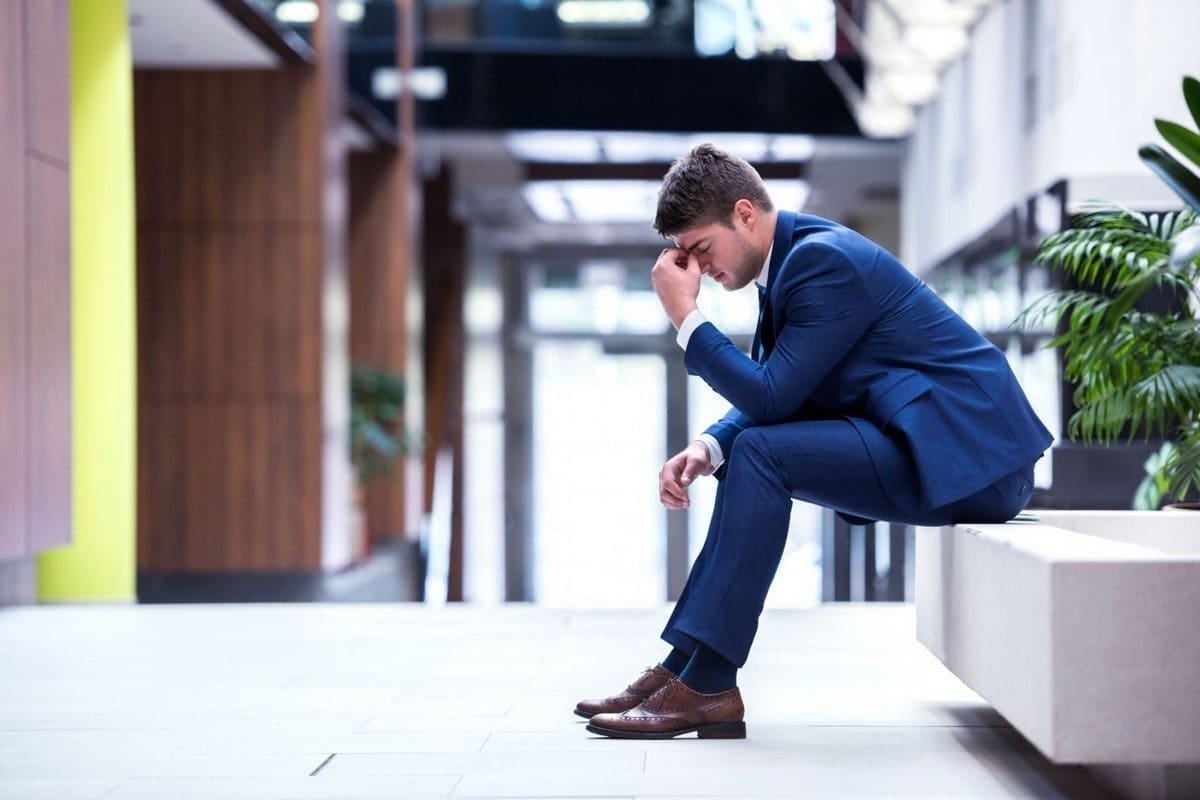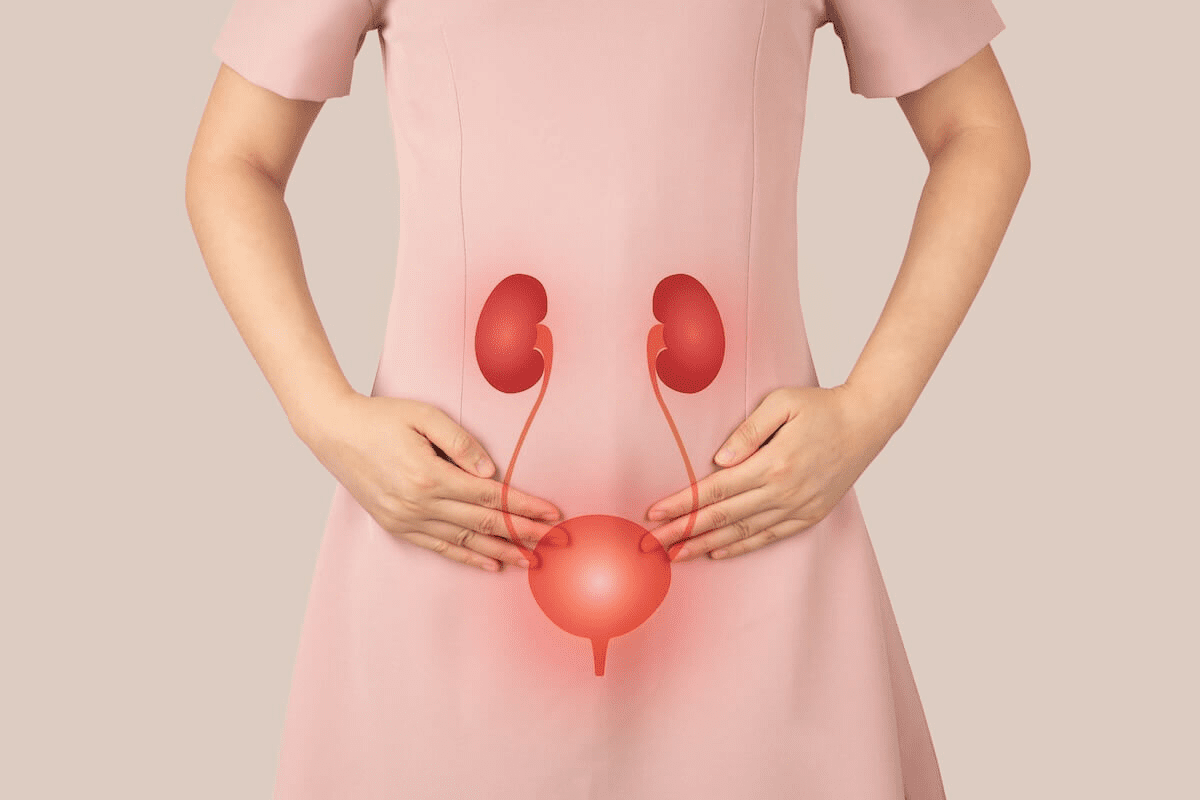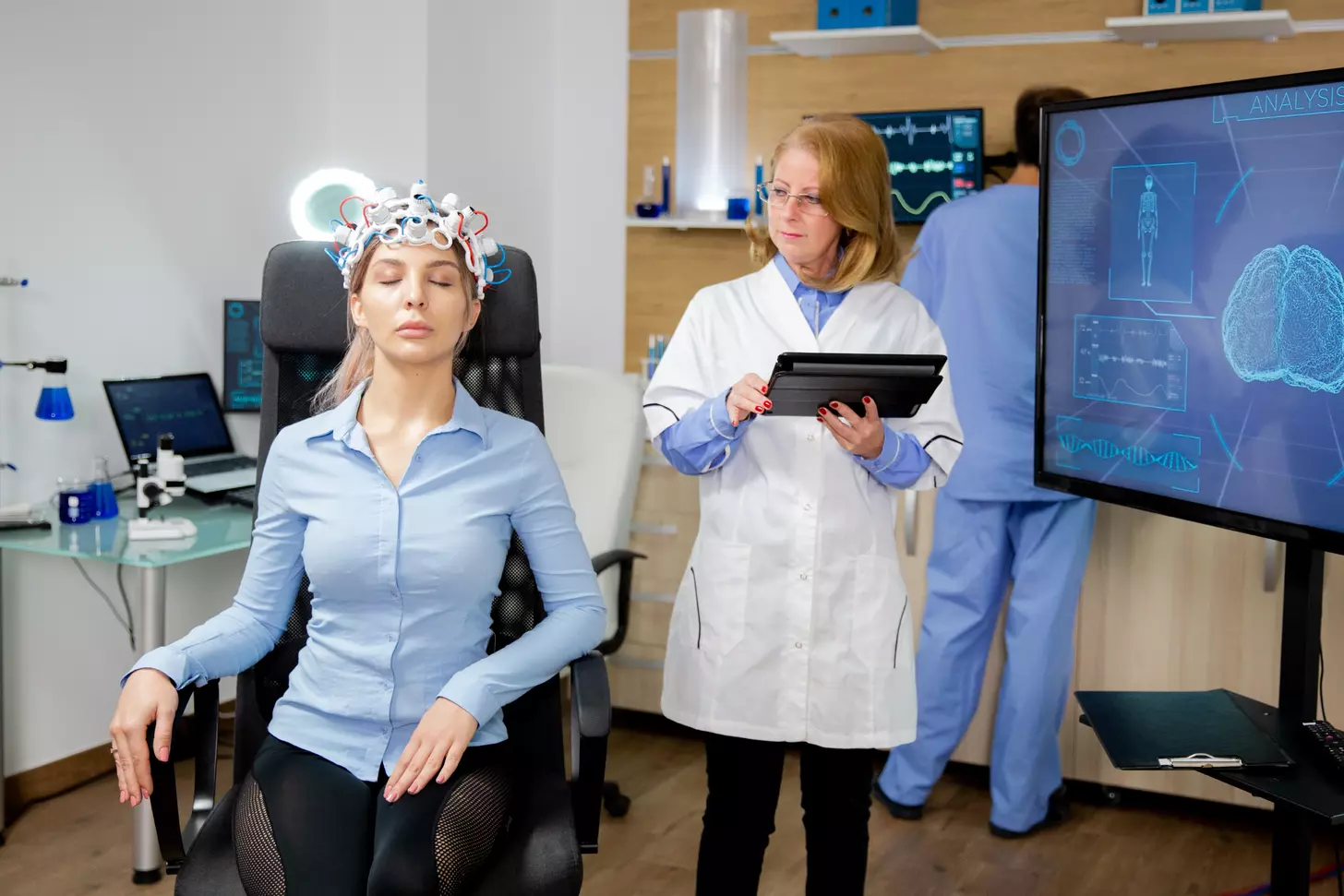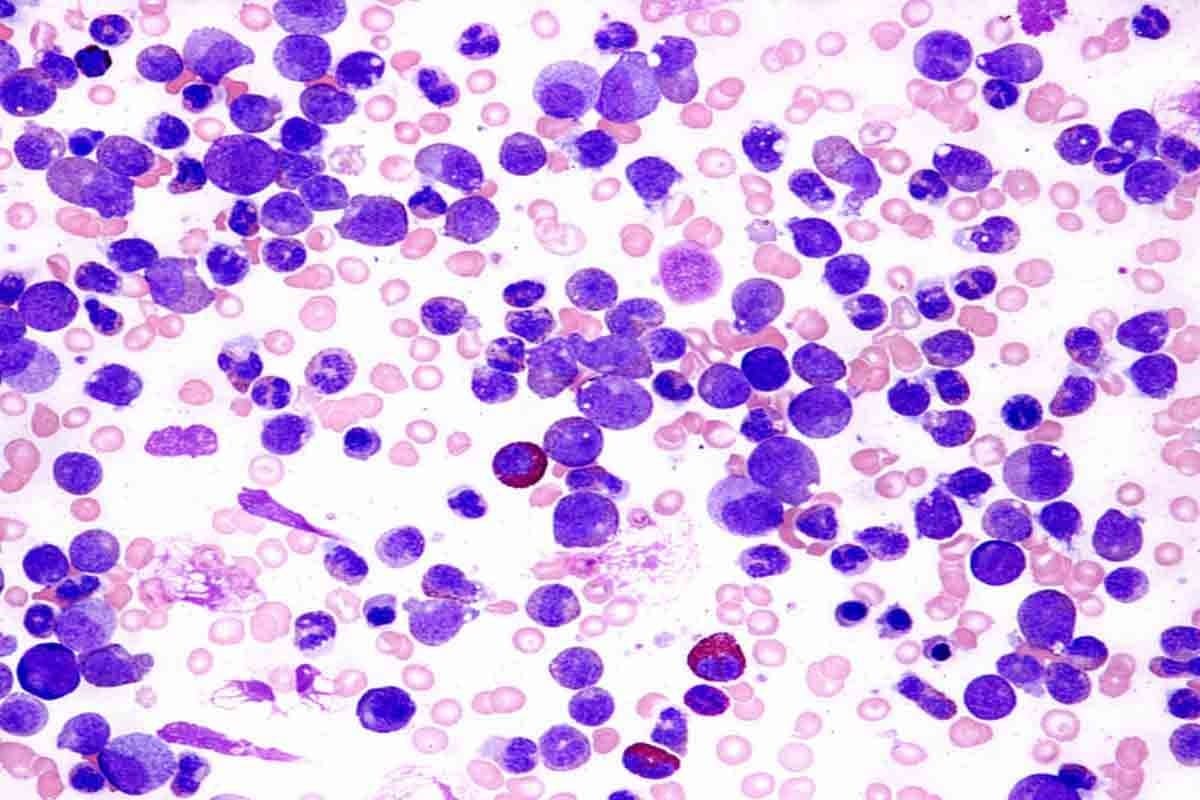Last Updated on November 26, 2025 by Bilal Hasdemir
Abdominal pain is a common problem that affects millions globally. Colon pain, in particular, can be a significant concern, as it may indicate an underlying digestive issue.
Feeling discomfort on the left side of the abdomen can be alarming. Understanding its causes is key for proper diagnosis and treatment. The colon, also known as the large intestine, is vital for digestion.
Several factors can cause colon pain, including inflammation, infection, and obstruction. Finding the root cause is essential to ease symptoms and prevent further issues.
Key Takeaways
- Colon pain can be a symptom of an underlying digestive issue.
- The left side of the abdomen is a common area for colon pain.
- Understanding the causes of colon pain is vital for proper diagnosis.
- Various factors can contribute to colon pain, including inflammation and infection.
- Identifying the root cause is essential to alleviate symptoms.
Understanding the Anatomy of the Colon
Knowing how the colon works is key to understanding digestion. The colon, or large intestine, absorbs water, processes waste, and hosts a lot of our body’s good bacteria.
Structure and Function of the Colon
The colon has different parts like the ascending, transverse, descending, and sigmoid colon. Each part does something special to help manage waste and absorb nutrients. The inside of the colon has a special lining that helps move stool and protects it from bacteria.
The colon does many things: it absorbs important salts and water, stores and breaks down waste, and has a lot of good bacteria. This bacteria helps with digestion and makes vitamins.
The Significance of the Left Side of the Colon
The left side of the colon, including the descending and sigmoid colon, is very important. It’s where problems like diverticulitis and colorectal cancer often start.
The left colon is more likely to get sick because it’s narrower and has more pressure. This can cause small pouches called diverticula to form. These pouches can get inflamed or infected, leading to diverticulitis.
| Colon Section | Function | Common Disorders |
| Ascending Colon | Water and electrolyte absorption | Less common site for diverticula |
| Descending Colon | Storage and fermentation of feces | Common site for diverticulitis |
| Sigmoid Colon | Temporary storage of feces before elimination | Prone to diverticulitis and colorectal cancer |
A gastroenterologist says, “The colon’s anatomy is closely tied to its function. Knowing this is key to diagnosing and treating digestive problems.”
“The colon is a vital organ that plays a critical role in our digestive health, and its anatomy is key to understanding its function.”
In conclusion, the colon’s anatomy, and its left side in particular, is vital for understanding its role in digestion and the risk of digestive disorders. By understanding the colon’s structure and function, we can better take care of our colon health.
Left Side Colon Pain: An Overview
Colon pain on the left side is a symptom that needs attention. It can cause sharp cramps, dull aches, or severe discomfort. This often leads people to see a doctor.
Common Characteristics of Left-Sided Colon Pain
Left-sided colon pain can show up in different ways. Symptoms include cramping, lower abdominal pain, and changes in bowel habits. The pain might stay the same or get worse after eating.
The type and how bad the pain is can tell us a lot. Sharp pains might mean a quick problem. Dull, ongoing pain could point to a long-term issue.
Differentiating Colon Pain from Other Abdominal Pain
Telling left side colon pain apart from other abdominal pain is important. Colon pain often ties to bowel movements or changes in bowel habits. Other pains might come from different parts of the body.
- Colon pain often involves changes in bowel habits or is relieved by bowel movements.
- Other abdominal pains may not have a direct correlation with bowel habits.
- The location of the pain can also be a distinguishing factor, with colon pain typically localized to the lower left abdomen.
Knowing these differences helps find the pain’s cause. It also guides the right tests and treatments.
Diverticulitis: A Leading Cause of Left-Sided Colon Pain
Diverticulitis is a common cause of left-sided colon pain. It happens when the diverticula in the colon gets inflamed. Diverticula are small pouches in the colon wall.
What Are Diverticula and How Do They Form?
Diverticula are small pouches in the digestive tract, often in the colon. They form when the colon’s inner layer bulges through weak spots. A low-fiber diet is thought to cause them by leading to constipation and increased pressure.
Several factors increase the risk of getting diverticula:
- Aging
- A low-fiber diet
- Obesity
- Lack of physical activity
- Smoking
Symptoms and Complications of Diverticulitis
When diverticula get inflamed, symptoms include:
- Pain on the left side of the abdomen
- Fever
- Nausea and vomiting
- Changes in bowel habits
- Bloating and gas
Untreated diverticulitis can cause serious problems like:
- Abscesses
- Perforation of the colon
- Fistulas
- Obstruction of the colon
Treatment Options for Diverticulitis
Treatment for diverticulitis often includes diet changes, antibiotics, and sometimes surgery. For mild cases, treatment might include:
- A liquid diet to rest the colon
- Antibiotics to treat the infection
- Over-the-counter pain medications
For severe cases, hospital care may be needed. Surgery might be required for serious complications like abscesses or perforation.
Constipation and Its Impact on the Left Colon
Constipation is a common problem that can cause a lot of discomfort, mainly in the left colon. It makes bowel movements infrequent, and stools hard or lumpy. It also makes it hard to pass stools.
When constipation happens, stool builds up in the colon, mostly in the descending colon. This is on the left side of the abdomen.
How Constipation Causes Left-Sided Pain
The left colon, or descending colon, is where stool tends to accumulate when you’re constipated. As stool piles up, it stretches the colon. This stretching can cause discomfort or pain.
This pain can be mild or severe. It may also be accompanied by bloating and gas buildup. The pain usually feels like it’s in the left lower part of the abdomen.
The pain comes from the stretching of the colon. This stretching activates the nerves in the colon wall. This can make you feel pain, which can get worse if you have hard or lumpy stools.
Managing Constipation-Related Colon Pain
To manage pain from constipation, you need to make some changes. Start by eating more fiber. Fiber makes stool softer and bulkier, making it easier to pass. Good sources of fiber include fruits, vegetables, and whole grains.
- Drink plenty of water to help soften stool
- Engage in regular physical activity to stimulate bowel movements
- Consider a fiber supplement if dietary changes are not sufficient
In some cases, over-the-counter laxatives might be suggested. But, always talk to a healthcare provider before using them regularly.
Gas and Bloating: Common Culprits
Gas and bloating are more than just minor issues. They can signal a bigger problem causing pain on the left side of your abdomen. When gas builds up in your digestive system, it can cause discomfort and pain.
The body naturally makes gas as it digests food. But if this gas doesn’t get released, it can lead to bloating and discomfort. The left colon is often where gas builds up because of its structure and function.
Why Gas Accumulates in the Left Colon
The left colon, or descending colon, is where stool gets ready for elimination. Gas can build up here for several reasons, including digestion and bacteria presence.
Gas in the left colon often comes from undigested food particles being fermented by bacteria. This process releases gases like nitrogen, oxygen, carbon dioxide, and hydrogen.
Dietary Factors Contributing to Gas and Bloating
What you eat greatly affects gas production and bloating. Some foods aren’t fully digested in the small intestine. They then get fermented by bacteria in the colon, producing gas.
- Beans and legumes
- Cabbage and broccoli
- Dairy products for those with lactose intolerance
- Wheat and other gluten-containing products for those with gluten intolerance
Knowing how your diet affects gas and bloating is key. Keeping a food diary can help spot foods that cause these symptoms.
| Food Item | Potential for Gas Production |
| Beans | High |
| Cabbage | High |
| Dairy Products | Variable (dependent on lactose tolerance) |
“The key to managing gas and bloating lies in understanding one’s diet and how different foods affect the body.”
Choosing your food wisely can greatly reduce gas and bloating. This can help ease left-sided colon pain.
Inflammatory Bowel Diseases Affecting the Left Colon
Inflammatory bowel diseases, like ulcerative colitis and Crohn’s disease, often cause pain in the left side of the colon. These conditions lead to chronic inflammation in the gut. This can make life very hard for those affected.
Ulcerative Colitis: Symptoms and Impact
Ulcerative colitis mainly hits the colon. People with it often have diarrhea, stomach pain, and bleeding in the rectum. It can also cause the colon to narrow and raise the risk of colon cancer.
“The symptoms of ulcerative colitis can vary in severity and impact daily activities,” notes a gastroenterology expert.
Crohn’s Disease Manifestations in the Left Colon
Crohn’s disease can affect any part of the gut, including the left colon. Symptoms include persistent diarrhea, stomach pain, and losing weight. It can also cause serious problems like bowel blockages and fistulas.
Treatment Approaches for Inflammatory Bowel Diseases
Treatment for IBD usually involves medicines, lifestyle changes, and sometimes surgery. Medicines like aminosalicylates, corticosteroids, and immunomodulators help reduce inflammation and manage symptoms.
- Dietary modifications to manage symptoms
- Stress management techniques
- Surgical intervention in severe cases
As stated by a medical professional, “Effective management of IBD requires a complete approach. It must address both the physical and emotional sides of the condition.”
Irritable Bowel Syndrome and Left-Sided Pain
Irritable Bowel Syndrome (IBS) is a complex condition that often causes pain on the left side of the colon. It affects the large intestine, leading to various symptoms that can greatly reduce one’s quality of life. It’s important to understand how IBS and left-sided colon pain are connected to manage and treat it effectively.
IBS Subtypes and Their Relation to Colon Pain
IBS is divided into several subtypes based on symptoms. The main types are IBS with constipation (IBS-C), IBS with diarrhea (IBS-D), and mixed IBS (IBS-M). Each type can lead to left-sided colon pain, but the reasons behind it vary.
In IBS-C, constipation causes pain on the left side due to fecal buildup. IBS-D leads to pain from fast-moving stool. Knowing the specific subtype helps in choosing the right treatment.
Managing IBS-Related Left Colon Discomfort
Managing left colon discomfort from IBS requires a variety of strategies. These include changing your diet, managing stress, and sometimes using medication. Starting with dietary changes is often the first step. This includes eating more fiber, avoiding certain foods, and following a low FODMAP diet.
Stress management is also key. Techniques like cognitive-behavioral therapy (CBT), mindfulness, and relaxation can help. These methods reduce stress, which can worsen IBS symptoms. In some cases, doctors may prescribe medications like antispasmodics or laxatives to help with specific symptoms.
By understanding the different types of IBS and their effects on the colon, people can better manage their symptoms. Effective management of IBS-related left colon discomfort requires a holistic approach. It must address both physical and psychological aspects of the condition.
Colon Cancer: When to Be Concerned
It’s important to know how colon cancer and left-sided colon pain are connected. Colon cancer, also known as colorectal cancer, is a serious health issue. It can cause different symptoms, including stomach pain.
Warning Signs of Colon Cancer in the Left Side
Spotting the signs of colon cancer early is key. Some common symptoms include:
- Persistent abdominal pain or discomfort
- Changes in bowel habits, such as diarrhea or constipation
- Blood in the stool or black, tarry stools
- Unexplained weight loss or fatigue
These signs can mean colon cancer, which is more serious if they don’t go away or get worse. If you notice any of these, see a doctor right away.
Screening and Early Detection
Screening for colon cancer is a big step in catching it early. There are several ways to screen, including:
- Colonoscopy: A direct look at the colon and rectum
- Fecal Occult Blood Test (FOBT): Finds hidden blood in stool
- Stool DNA Tests: Looks for genetic signs of colon cancer
Screening early can greatly improve treatment chances for colon cancer. Start screening at 45 or when your doctor says it’s time, based on your risk.
Treatment Options and Prognosis
The treatment for colon cancer depends on several factors. These include the cancer’s stage, location, and your overall health. Treatment options might be:
- Surgery: Removes the cancerous part of the colon
- Chemotherapy: Kills cancer cells that may have spread
- Radiation Therapy: Uses high-energy rays to target cancer cells
- Targeted Therapy: Targets specific cancer cell traits
The outlook for colon cancer varies by stage at diagnosis. Early-stage cancer is often treatable, with better survival rates. Regular screening and quick action for symptoms can greatly improve your chances.
Intestinal Blockages and Obstructions
It’s important to know about intestinal blockages and obstructions to understand left-sided colon pain. These blockages happen when the small or large intestine gets blocked. This stops the normal flow of intestinal contents.
Causes of Blockages in the Left Colon
Many things can cause blockages in the left colon. Adhesions from previous surgeries are a big reason. They can twist or kink the intestine, blocking the flow. Hernias can also block the intestine if they become trapped or cut off blood supply.
Colon cancer and diverticulitis can also cause blockages. Colon cancer grows and blocks the colon’s lumen. Diverticulitis causes the colon to narrow due to inflammation. Sometimes, intussusception can block the intestine by telescoping into another segment.
Symptoms and Emergency Warning Signs
Symptoms of intestinal blockage vary based on the blockage’s location and severity. Common signs include severe abdominal pain, nausea, vomiting, constipation, and bloating. If the blockage is complete, you might not be able to pass gas or stool at all.
Signs that need immediate medical help include severe abdominal pain that gets worse, vomiting blood or bloody bowel movements, fever over 101.5 °F (38.6 °C), and signs of dehydration like too much thirst, dark urine, or feeling dizzy.
“Prompt medical intervention is key to prevent serious issues like bowel ischemia or perforation.”
If you or someone you know has these symptoms, get medical help right away. Early treatment can greatly improve the outcome.
Non-Digestive Causes of Left-Sided Pain
It’s important to know the non-digestive reasons for left-sided pain. Colon problems are a big cause, but other things can also cause pain in this area.
Muscle Strains and Abdominal Wall Pain
Muscle strains and abdominal wall pain are common causes of left-sided pain. Muscle strains happen when the muscles in the abdominal wall get stretched or torn. This can be due to overuse or sudden injury. Abdominal wall pain can be in one spot or spread out and gets worse with movement or pressure.
To figure out abdominal wall pain, doctors do a detailed check-up. They might use the Carnett’s test to tell if it’s abdominal wall pain or something else.
Gynecological and Urological Conditions
Left-sided pain can also come from gynecological or urological conditions. For women, things like ovarian cysts, endometriosis, or ectopic pregnancy can cause pain. Kidney stones or urinary tract infections can also cause pain on the left side.
| Condition | Symptoms | Diagnostic Approach |
| Ovarian Cysts | Pelvic pain, bloating, irregular menstrual cycles | Pelvic ultrasound, CT scan |
| Kidney Stones | Severe flank pain, hematuria, nausea | CT scan, ultrasound, X-ray |
| Endometriosis | Pelvic pain, dysmenorrhea, infertility | Laparoscopy, MRI, pelvic exam |
Distinguishing Between Colon Pain and Other Sources
Telling colon pain from other left-sided pain can be tricky but is key for right treatment. A good start is a detailed medical history and physical check-up.
Tests like imaging studies (e.g., CT scans, ultrasound) and endoscopic procedures can find the pain’s source. Knowing the pain’s details, like how long it lasts, how bad it is, and what makes it worse, helps a lot.
In summary, while colon problems are a big deal for left-sided pain, we must also think about other causes. These include muscle strains, abdominal wall pain, and gynecological and urological issues. A full check-up is needed to find the real cause of left-sided pain and the right treatment.
Food Intolerances and Allergies Affecting the Colon
The link between food sensitivities and colon pain is complex. Food intolerances and allergies can harm colon health. This leads to discomfort and pain, often on the left side.
Common Food Triggers for Colon Pain
Some foods can make colon pain worse. These include:
- Dairy products, like milk, for those with lactose intolerance
- Gluten in foods for people with celiac disease or gluten sensitivity
- High FODMAP foods, which can cause gas and bloating
- Processed meats and foods high in sugar
Staying away from these foods can help ease colon pain.
Identifying and Managing Food Sensitivities
Managing food sensitivities involves diet changes and awareness. Here are some steps:
- Keep a food diary to track what you eat and how you feel
- Remove common trigger foods for a while to see symptom changes
- Consider getting tested for food allergies or intolerances
- Work with a healthcare provider or dietitian to create a diet plan
Understanding and managing food sensitivities can lessen left-sided colon pain. It also improves digestive health.
Maintaining a balanced diet is key when dealing with food intolerances. It’s hard to get enough nutrients without some foods. But it’s vital for your health.
“The key to managing food intolerances is not just about avoiding trigger foods, but also about maintaining a nutrient-rich diet that supports overall health.” – Nutrition Expert
Diagnostic Approaches for Left Side Colon Pain
Diagnosing left side colon pain requires a few steps. First, doctors look at your medical history and do a physical exam. They also use advanced tests to find the cause of your pain.
Physical Examination and Medical History
Doctors start by checking your medical history and doing a physical exam. They look at your symptoms and health history. This helps them figure out what might be wrong.
During the exam, the doctor might press on your abdomen to see if it hurts. They also watch your body language for clues about your pain.
Imaging Studies and Laboratory Tests
Imaging studies are key in finding out what’s causing your pain. Here are some common ones:
- Computed Tomography (CT) scans: These scans show detailed images of your colon and the tissues around it. They can spot problems like diverticulitis or colon cancer.
- Ultrasound: It’s good for finding gallstones, kidney stones, or other issues that might be causing your pain.
- X-rays: These can show if there’s a blockage in your bowel or other structural problems.
Lab tests, like blood work and stool analysis, are also important. They help find signs of infection, inflammation, or other issues that might be causing your pain.
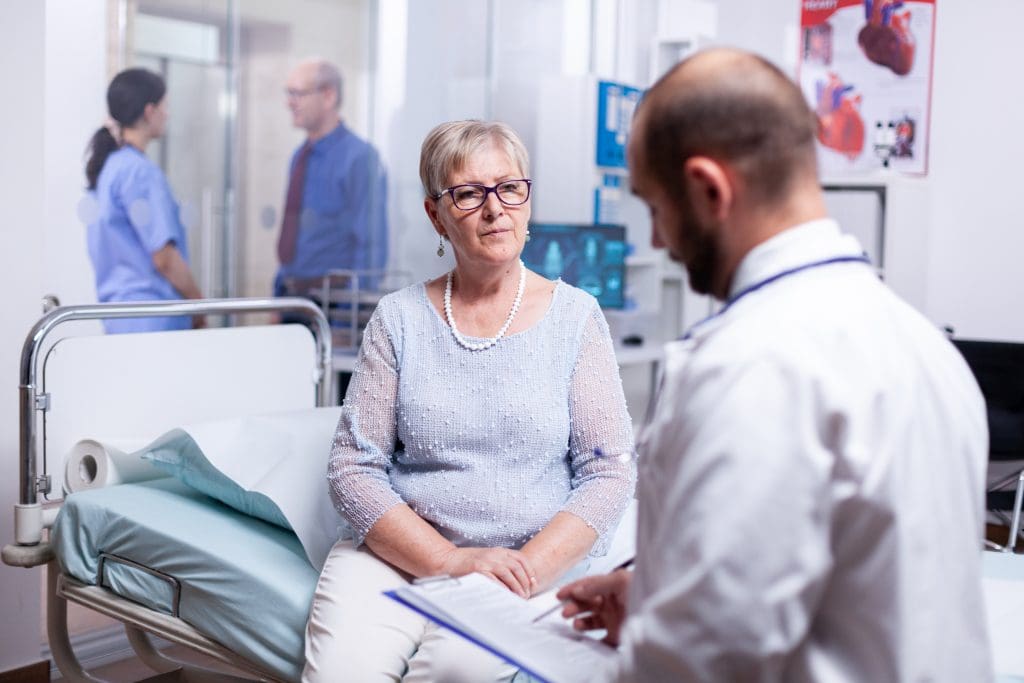
Endoscopic Procedures
Endoscopic procedures let doctors see inside your colon. They’re very helpful in diagnosing left side colon pain. Here are a few examples:
- Colonoscopy: This lets doctors check your whole colon. They can find polyps, cancer, or other problems.
- Sigmoidoscopy: It focuses on the sigmoid colon and rectum. It’s good for spotting conditions like diverticulitis or ulcerative colitis.
These procedures can also take biopsies. Doctors then examine these samples under a microscope. This helps them make a clear diagnosis.
By using all these methods, doctors can find out what’s causing your pain. Then, they can create a treatment plan that’s right for you.
Treatment Options for Left Colon Pain
Treatment for left colon pain includes medical, dietary, and sometimes surgical steps. The right treatment depends on the cause, how severe it is, and the patient’s health.
Medication-Based Approaches
Managing left colon pain often starts with medication. The kind of drug used depends on the pain’s cause.
- Antispasmodics for irritable bowel syndrome (IBS) to reduce spasms.
- Anti-inflammatory drugs for conditions like diverticulitis or inflammatory bowel disease (IBD).
- Laxatives or stool softeners for constipation-related pain.
It’s important to follow a healthcare provider’s advice when taking these drugs. This helps avoid side effects or becoming too dependent.
Dietary and Lifestyle Modifications
Dietary changes are often suggested along with or instead of medication. This depends on the cause of left colon pain.
| Condition | Dietary Recommendation |
| Diverticulitis | High-fiber diet to prevent future episodes |
| IBS | Avoid trigger foods; consider a low-FODMAP diet |
| Constipation | Increase fiber and fluid intake |
Changing your lifestyle, like exercising regularly and managing stress, can also help symptoms.
“A well-balanced diet rich in fiber can significantly reduce the risk of colon pain by promoting regular bowel movements and preventing conditions like diverticulitis.”
” Gastroenterology Expert
Surgical Interventions When Necessary
In some cases, surgery is needed to treat left colon pain’s cause.
- Diverticulitis Complications: Surgery may be needed for abscesses or perforations.
- IBD: Surgery can remove damaged portions of the colon.
- Colon Cancer: Surgical resection is a primary treatment.
Surgery is usually considered after other treatments fail or if the condition is urgent.
Preventing Left Side Colon Pain
To prevent left-sided colon pain, it’s important to know about diet, exercise, and staying hydrated. These steps can help keep your colon healthy and reduce pain.
Dietary Strategies for Colon Health
Eating a balanced diet is key for a healthy colon. Foods high in fiber, like fruits, veggies, and whole grains, help avoid constipation and lower diverticulitis risk.
“A high-fiber diet is associated with a lower risk of colon pain and other gastrointestinal disorders.”
Foods rich in omega-3s, like salmon and flaxseeds, can reduce colon inflammation. It’s also wise to cut down on processed foods and sugars, which can harm gut health.
- Increase consumption of fruits and vegetables
- Include whole grains in your diet
- Limit processed foods and sugars
| Food Group | Recommended Foods | Benefits |
| Fruits and Vegetables | Apples, broccoli, carrots | High in fiber, antioxidants |
| Whole Grains | Oats, quinoa, brown rice | Rich in fiber, vitamins, and minerals |
| Protein Sources | Salmon, chicken, beans | Good sources of omega-3 fatty acids and protein |
Exercise and Physical Activity Benefits
Regular exercise is vital for colon health. It helps move your bowels, eases IBS symptoms, and boosts digestive health.
Research shows exercise cuts colon cancer risk and boosts survival chances. Walking, jogging, and yoga are great for colon health.
- Aim for at least 30 minutes of moderate-intensity exercise per day
- Incorporate strength training exercises into your routine
- Practice stress-reducing activities like yoga or meditation
Hydration and Fiber Intake
Drinking enough water is key to avoiding constipation and keeping bowel movements regular. Water softens stool, making it easier to pass.
Boosting fiber intake also aids regular bowel movements. Aim for 25-30 grams of fiber daily. Legumes, nuts, and seeds are great fiber sources.
Key Takeaways:
- Drink at least 8-10 glasses of water per day
- Increase fiber intake through foods like legumes, nuts, and seeds
- Monitor your body’s response to dietary changes and adjust as needed
Conclusion
Knowing why left-sided colon pain happens is key to good digestive health. Many things can cause this pain, like diverticulitis, constipation, and gas. Inflammatory bowel diseases and colon cancer are also culprits.
If your pain doesn’t go away or gets worse, see a doctor. They can find out what’s wrong and help you feel better. This way, you can avoid bigger problems.
Living a healthy life can also help. Eating right, exercising, and drinking enough water can lower your risk of colon pain. It’s good for your whole digestive system.
FAQ
What are the common causes of colon pain on the left side?
Causes include diverticulitis, constipation, and gas buildup. Bloating, inflammatory bowel diseases, and irritable bowel syndrome are also common. Colon cancer and intestinal blockages can also cause pain.
How does diverticulitis cause left-sided colon pain?
Diverticulitis happens when small pouches in the colon wall get inflamed or infected. This leads to pain, usually on the left side.
Can constipation cause pain in the left colon?
Yes, constipation can cause left colon pain. This is due to stool and gas buildup, which puts pressure on the colon walls.
What dietary factors contribute to gas and bloating?
Foods high in fiber, beans, cabbage, broccoli, and carbonated drinks can cause gas and bloating.
How do inflammatory bowel diseases affect the left colon?
Conditions like ulcerative colitis and Crohn’s disease can cause inflammation and damage. This leads to pain and other symptoms in the left colon.
What is the relationship between irritable bowel syndrome and left-sided colon pain?
IBS can cause recurring abdominal pain, including on the left side. It often comes with changes in bowel movements.
What are the warning signs of colon cancer?
Warning signs include persistent abdominal pain, changes in bowel habits, and blood in the stool. Unexplained weight loss is also a warning sign.
How are intestinal blockages diagnosed?
Diagnosis involves imaging studies like X-rays and CT scans. Sometimes, endoscopic procedures are needed to find the blockage.
Can food intolerances cause left-sided colon pain?
Yes, intolerances to foods like lactose, gluten, or high-FODMAP foods can cause colon pain. This includes pain on the left side.
What diagnostic approaches are used to evaluate left-sided colon pain?
Approaches include physical examination, medical history, and imaging studies. Laboratory tests and endoscopic procedures are also used.
What treatment options are available for left-sided colon pain?
Treatment depends on the cause. It may include medication, dietary and lifestyle changes, or surgery.
How can left-sided colon pain be prevented?
Preventive measures include a healthy diet, staying hydrated, and regular exercise. Managing stress is also important.


